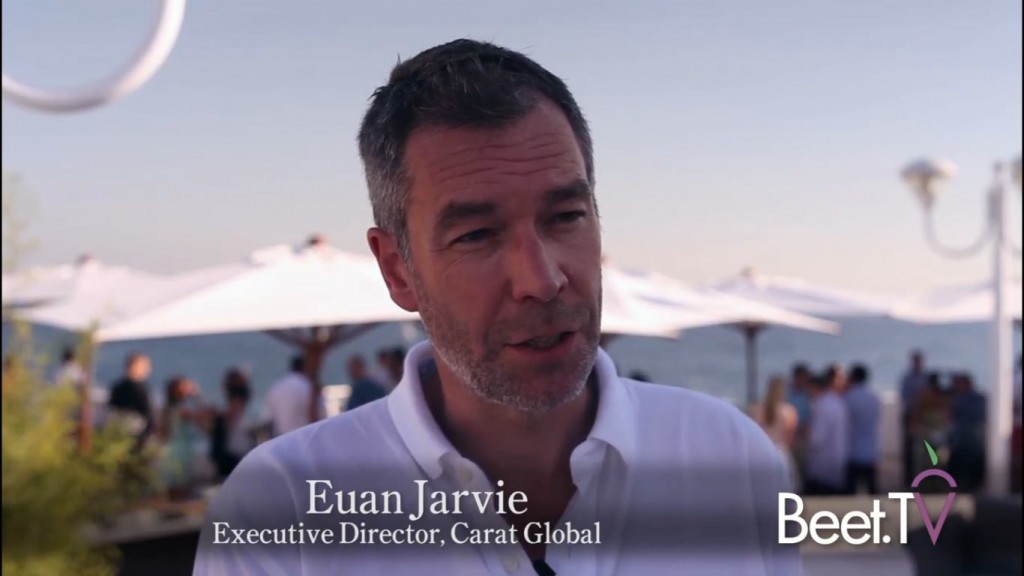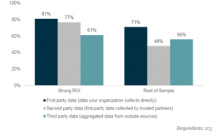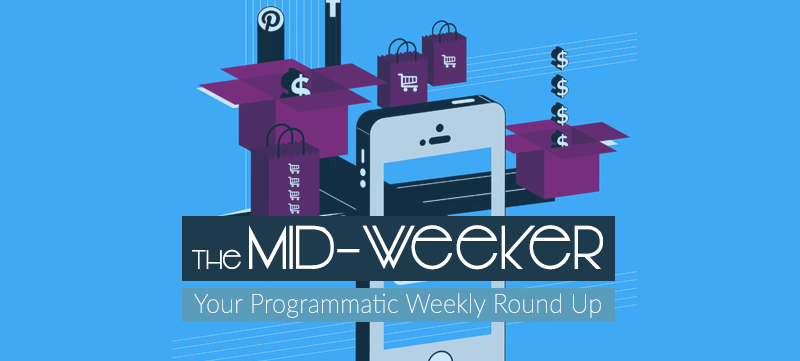Companies Need to Embrace Programmatic or Be Left Behind
Speaking from Cannes Lions, Evan Jarvie of Carat Global highlights the importance of understanding human behaviour when running a Programmatic campaign, so that you can better connect with the consumer at key points of interest. Watch video.
Digital Marketing Battle Being Won with First Party Data (Econsultancy Study)
 A new study by Econsultancy has found that organisations are favouring first party data over third party data. The study, which consulted 302 marketers from companies with over $100 million in revenue, found that the use of first party data has proven to be particularly important for those businesses with strong ROI, with 81% of these companies using first party data. While first party data is less important for companies with weaker ROI, it is still the predominant data source, with 71% of these organisations also using first party data. These statistics suggest that marketers are realising the merits of first party data, which allows for personalisation and leads to higher customer engagement. In order to reap the rewards of first party data, companies need to deal with the challenge of collecting and interpreting the data, with the oncoming Internet of Things set to make this process more complex than ever. The articles finishes by stating that best results will come from overcoming the challenge presented by the scarcity of first party data by utilising first party data collected over a number of devices. Read more.
A new study by Econsultancy has found that organisations are favouring first party data over third party data. The study, which consulted 302 marketers from companies with over $100 million in revenue, found that the use of first party data has proven to be particularly important for those businesses with strong ROI, with 81% of these companies using first party data. While first party data is less important for companies with weaker ROI, it is still the predominant data source, with 71% of these organisations also using first party data. These statistics suggest that marketers are realising the merits of first party data, which allows for personalisation and leads to higher customer engagement. In order to reap the rewards of first party data, companies need to deal with the challenge of collecting and interpreting the data, with the oncoming Internet of Things set to make this process more complex than ever. The articles finishes by stating that best results will come from overcoming the challenge presented by the scarcity of first party data by utilising first party data collected over a number of devices. Read more.
Does Viewability Equate to Attention?
 This article argues that the advertising industry is concerned with buying and selling attention and so the best metric for advertisers is one that quantifies the attention given to the ad. Since measuring impressions is an ineffective method of measuring attention, the ad industry has started to focus on viewability instead. However, viewability does not equate to attention, and therefore other ways of calculating share of attention should be considered. One method of measuring attention is to consider the movement of the mouse, which is what analytics firm Chartbeat attempts to do. Another way to measure attention is through eye-tracking, although this is not easy to implement. Whatever the method, the most meaningful data for advertisers is the data that shows how much attention is being given to the ad, rather than the viewability of the ad. Read more.
This article argues that the advertising industry is concerned with buying and selling attention and so the best metric for advertisers is one that quantifies the attention given to the ad. Since measuring impressions is an ineffective method of measuring attention, the ad industry has started to focus on viewability instead. However, viewability does not equate to attention, and therefore other ways of calculating share of attention should be considered. One method of measuring attention is to consider the movement of the mouse, which is what analytics firm Chartbeat attempts to do. Another way to measure attention is through eye-tracking, although this is not easy to implement. Whatever the method, the most meaningful data for advertisers is the data that shows how much attention is being given to the ad, rather than the viewability of the ad. Read more.
Facebook Introduces Ads in Suggested Videos
 In line with its recent attempts to rival YouTube as the top online video platform, Facebook has been testing out video advertising on the site. The advertisements are set to appear in a brand new “suggested video” feed. Despite being in the testing phase, a number of content partners are already on-board, such as Hearst, Fox Sports and Funny or Die. As it stands, the content partner will receive 55% of the revenue, with Facebook pocketing the remainder. Video has become an increasingly important part of Facebook’s offerings, with 4 billion views per day in the first quarter of 2015, up 300% since the third quarter of 2014. Read more.
In line with its recent attempts to rival YouTube as the top online video platform, Facebook has been testing out video advertising on the site. The advertisements are set to appear in a brand new “suggested video” feed. Despite being in the testing phase, a number of content partners are already on-board, such as Hearst, Fox Sports and Funny or Die. As it stands, the content partner will receive 55% of the revenue, with Facebook pocketing the remainder. Video has become an increasingly important part of Facebook’s offerings, with 4 billion views per day in the first quarter of 2015, up 300% since the third quarter of 2014. Read more.
Mobile Phones Strengthen Digital Video Viewing
 Ooyala, a video-technology company, has found that 34% of digital video views on its network are on mobile, as of Q1 2015. Nearly half of all mobile video viewing was on video of less than 3 minutes long. These findings are in line with IAB’s research which found that 57% would watch short videos on a daily basis, dwarfing the 35% that would watch long videos daily. Furthermore, there appears to be an acceptance of advertising in videos among consumers, so long as the video content is free. 78% of those surveyed stated that they would rather watch free videos supported by ads than watch pay to view videos on their mobile. Read more.
Ooyala, a video-technology company, has found that 34% of digital video views on its network are on mobile, as of Q1 2015. Nearly half of all mobile video viewing was on video of less than 3 minutes long. These findings are in line with IAB’s research which found that 57% would watch short videos on a daily basis, dwarfing the 35% that would watch long videos daily. Furthermore, there appears to be an acceptance of advertising in videos among consumers, so long as the video content is free. 78% of those surveyed stated that they would rather watch free videos supported by ads than watch pay to view videos on their mobile. Read more.
Buy Buttons Look to Encourage Mobile Shopping
 Google, Facebook, Twitter and Pinterest are introducing buy buttons in an attempt to encourage consumers to purchase products on their mobile device. An eMarketer report found that the desktop is still the main port of call when making an online purchase, with mobile only accounting for a fifth of e-commerce sales. However, with one-click ordering now being offered by major technology companies, the willingness of consumers to purchase on a mobile device could increase. Read more.
Google, Facebook, Twitter and Pinterest are introducing buy buttons in an attempt to encourage consumers to purchase products on their mobile device. An eMarketer report found that the desktop is still the main port of call when making an online purchase, with mobile only accounting for a fifth of e-commerce sales. However, with one-click ordering now being offered by major technology companies, the willingness of consumers to purchase on a mobile device could increase. Read more.
Ireland’s VOD Viewers Favour Free Content, Even if it Means Ads
 Nielsen research has found that the Irish audience is consuming a lot of digital video, with 67% of internet users aged 16 or over having viewed video-on-demand in the 6 months leading up to polling. Half of the VOD viewers declared that they are happy or somewhat happy to watch advertisements in order to access free content – a finding that seems to confirm the research by IAB above and is sure to delight marketers trying to tap into the Irish market. Read more.
Nielsen research has found that the Irish audience is consuming a lot of digital video, with 67% of internet users aged 16 or over having viewed video-on-demand in the 6 months leading up to polling. Half of the VOD viewers declared that they are happy or somewhat happy to watch advertisements in order to access free content – a finding that seems to confirm the research by IAB above and is sure to delight marketers trying to tap into the Irish market. Read more.
Check out last week’s Mid-Weeker for even more Programmatic News


